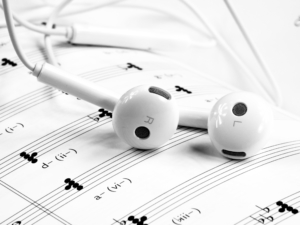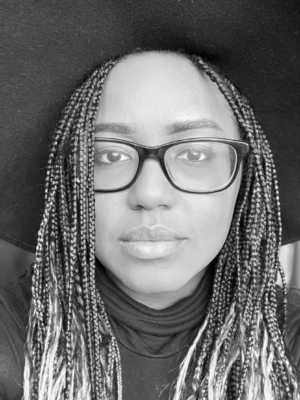The Feeling
 The first time my classically trained ears hear “Forty Six & 2” by the legendary metal band Tool, I was washing dishes alone in my apartment, music blasting through my Bose headphones. I had heard of Tool before, of course, but in high school my best friend wouldn’t stop talking about them, but, like everything else that was overtalked, I ignored them. I wasn’t really into heavy metal at the time either. I didn’t find much of what I was looking for in heavy metal, but I opened my Spotify app and search for Tool. What I really wanted to do was focus, and the way that I focused best was through classical music.
The first time my classically trained ears hear “Forty Six & 2” by the legendary metal band Tool, I was washing dishes alone in my apartment, music blasting through my Bose headphones. I had heard of Tool before, of course, but in high school my best friend wouldn’t stop talking about them, but, like everything else that was overtalked, I ignored them. I wasn’t really into heavy metal at the time either. I didn’t find much of what I was looking for in heavy metal, but I opened my Spotify app and search for Tool. What I really wanted to do was focus, and the way that I focused best was through classical music.
Focus has been a challenge for me because I have an attention deficit hyperactive disorder, or ADHD. ADHD brought an onset of problems, most notably, interfering with my ability to learn, including learning how to play music. I was interested in all kinds of music, but the genre that took me to heights that I’ve never reached before was classical music. Before the age of 25, I didn’t know I had ADHD. I listened to music with gentle melodies because it was helping my mind slow down so that I could think. Because of this, I had a powerful connection to classical music that I didn’t have in other genres.
When the first bars of “Forty Six & 2” pass through my ears, I’m not quite hooked. The guitar riffs sound familiar. The drumming is slight. The lead guitarist keeps the rift going bar after bar, which is unusual for me to hear, and then … the chorus. It lights up my body in a way that I rarely experience in music, except for classical. My jaw drops. Lead singer Maynard James Keenan’s powerful croon lights my brain on fire. I start counting because that’s what my brain is trained to do when there are different time signatures in a song. I do this with complicated pieces that I’m trying to understand. My brain is doing the thing it was trained to do—I’m breaking the song down.
I used to do this all the time when I heard a piece of music that made me aware of all my senses, my brain fired and twinkled like stars in the night sky. When I started playing viola, I was ten and wide-eyed, wanting to do whatever I wanted, including playing music. I practiced every day after school for hours, the routine continuing throughout middle school and high school. When I couldn’t play music, listened to music on the device I had at the time. In high school, music became an escape as I played Mozart, Vivaldi, Beethoven, and Sibelius in symphony orchestra. In college, I played viola in a worship band, where I used my classical training without playing classical music. When I graduated from college, I had to focus on surviving. I remember the day my brain changed. I remember the wind blowing through autumn trees as I walked home from the bus stop from work. When my little brother played his cello in that evening, the joy that came from his strings didn’t surround me the same way. The sounds were confusing to my ears, instead of soothing me. I hadn’t realized my ADHD had worsened.
***
Two years after I graduate from college, I met my partner Jake, and he recommended that I should listen to Tool, specifically “Forty Six &2”. I believe in signs, but rarely do I believe in music recommendations. Ironically, this shouldn’t be the first time that I’m experiencing this song because of my high school best friend. Jake showed me a video of middle school kids riffing through this difficult metal song in his car on a blistering winter day when we were driving from Ann Arbor to Detroit. As a musician myself, I should have registered the brilliance right then and there, but I didn’t. These kids were rocking, performing brilliantly for twelve year-olds, to the point where they reminded me of the geniuses that I went to school with. My mind was obsessed with who I could have been if I stuck with music seriously after high school.
Now, I wasn’t practicing, wasn’t learning music, wasn’t dreaming, wasn’t hearing. I was a musician in a web of “should.” I “should” have been performing like those kids in the video instead of sitting at a desk. I was jealous because I “should” have been able to play anything I ever wanted, however I wanted. Then I was told that I should go to law school because I was good at it, not because I wanted to. I blamed my incompetence on the fact that I couldn’t concentrate well enough, that ADHD was keeping me from being the person I needed to be. I should be playing viola, learning new instruments, be in bands and playing in front of audiences. I should be more than I am.
“Forty Six & 2” is a song that was beginning to change my neural pathways for classical music by honoring them. I realized that I was afraid of playing music because I thought ADHD would take over. I thought my musician days were over. I fell out of love with classical music, the first kind of music that taught me music even existed. I felt hollow. Music was a distant friend and connection seemed intangible. It shifted who I was as a musician and a person—I became more chaotic and frazzled about who I was. If I didn’t have the same connection I had to music before, then what did I have?
The first “should” I took to heart was “Forty Six & 2.” I am in a state of conversion when I first hear and understand “Forty Six & 2.” I am no longer working towards law school, no longer working. I quit my job in order to rest my mind and to search for myself again. I am no longer playing music or listening to the sounds that allow me to feel like me. I am in limbo. Yet, I am learning how to meditate and be in the moment, teaching myself to listen in an open and viable way. My partner Jake introduces me to Alex Grey, the artist who does the cover art for Tool, before I actually meet Tool. I see this when I see his art—a psychedelic understanding of body and mind as some of us see it. In his art, I start to see what I feel in music for the first time. And so, as I listen to “Forty Six & 2,” I recognize that I am getting The Feeling.
The Feeling is a tingle through your eardrums, a shiver through and around your spine, coursing through the rest of your body when you’ve discovered a song that must be on repeat for at least three days straight. But more than The Feeling, “Forty Six & 2” gives me a Symphonic Eargasm, a sensation that I only get through listening to classical music and songs that incorporate symphonic elements—strings, horns, percussion, the whole thing.
The Feeling is something that I probably gained through synthesis at birth: When I was born, my dad bought a stereo and played music softly by my premature body. The love of music was created right then and there. Since then, there was not a moment in which I couldn’t feel music through my whole body. Deep inside the empty, webby parts of myself I knew that music meant more to me than anything. It was my friend when I didn’t have any, my savior when I thought I couldn’t be saved, a voice when I don’t have the words to explain something, and when I am muted and incoherent. Music is something that I cannot live without, an anchor to life, an amulet of safety. The Feeling in this moment, more than tingle, more than a Symphonic Eargasm, but the realization that I had left something to rot in the cold that never left me. It was a reinvigoration of something that I thought I had lost.
***
 I start counting again. The music changes time and I’m trying to figure out what the time signature is by counting the 8th notes. The changes from tempo to tempo from time to time is so smooth and professional, that I almost forget that this was a metal band. Metal has never sounded as technical as classical music to me. That’s what I loved about classical music in the first place—that it was difficult and layered and structured so that there are harmonies that must be discovered through careful listening. By counting, I’m learning I have to use what I know to understand what the song is telling me, and it is telling me that I know who I am. I am not in limbo anymore. I know what I know. I’m just a little misdirected.
I start counting again. The music changes time and I’m trying to figure out what the time signature is by counting the 8th notes. The changes from tempo to tempo from time to time is so smooth and professional, that I almost forget that this was a metal band. Metal has never sounded as technical as classical music to me. That’s what I loved about classical music in the first place—that it was difficult and layered and structured so that there are harmonies that must be discovered through careful listening. By counting, I’m learning I have to use what I know to understand what the song is telling me, and it is telling me that I know who I am. I am not in limbo anymore. I know what I know. I’m just a little misdirected.
I listen to the entire Anema album because I’m hooked like ice picks in a glacier. Their songs are sending new waves of music through my head that are changing the way I think. I take my viola from the corner of my room, dust off the case, tune it, and press the bow hairs to steel strings. I am playing viola again. A couple of years later, I get a guitar and start to learn more music on an instrument I’ve wanted to play my entire life. I’m learning again. I’m dreaming again. When I listen to Tool, I continue to count because it’s like analyzing a work of art, tearing it apart without butchering it. I count, and I fall deeply and purposely into sound waves of a rare emotion: joy.
That’s what The Feeling brings along with everything else: joy. In a weird way, it also brings discovery, but that’s the beautiful thing about discovery. Tool brings me joy that I don’t feel with many things. I still have my troubles, my vices, and struggles, but I can say that I rediscovered my joy of classical music, my joy of musicianship, my joy of myself, by discovering Tool while washing dishes.





